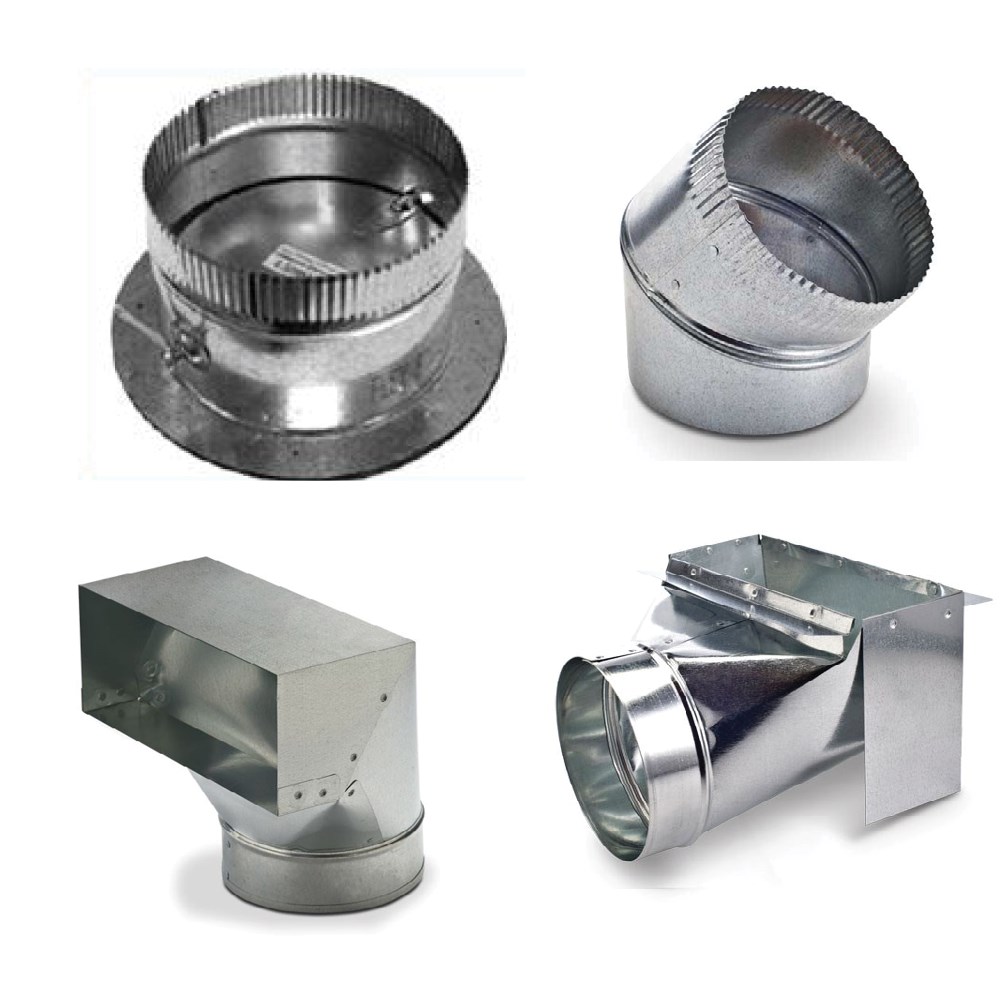
Selecting the appropriate ventilation ducting supplies for a commercial building is crucial for ensuring the efficiency, performance, and longevity of the HVAC system. Several key factors must be considered, each of which plays a significant role in the overall effectiveness of the ventilation system. These factors include material selection, duct size and shape, insulation, sealing, and compliance with standards and regulations.
1. Material Selection:
The material of the ducting supplies significantly impacts durability, cost, and airflow quality. Common materials include galvanized steel, aluminum, flexible ducting, and fabric ducts.
- Galvanized Steel: Known for its durability and strength, galvanized steel is a popular choice for commercial applications. It is resistant to rust and mechanical damage, making it suitable for long-term use.
- Aluminum: Lighter and easier to install than steel, aluminum ducts are also corrosion-resistant. However, they may not be as durable as steel in high-traffic areas.
- Flexible Ducting: Made from a combination of plastic and metal wire, flexible ducts are versatile and easy to install in tight spaces. They are ideal for short runs but may not be as efficient as rigid ducts over longer distances.
- Fabric Ducts: These are lightweight and can be designed for even air distribution. They are suitable for spaces requiring a high level of hygiene, like food processing areas.
2. Duct Size and Shape:
The size and shape of the ducts are critical for ensuring efficient airflow. Ducts that are too small can lead to increased air velocity, resulting in noise and energy loss, while oversized ducts may cause a drop in air pressure.
- Rectangular Ducts: Common in commercial buildings due to their ability to fit into spaces like ceilings and walls. However, they have higher resistance to airflow compared to round ducts.
- Round Ducts: These offer lower resistance to airflow and are more efficient. They are often used in applications where space is not a constraint.
- Oval Ducts: A compromise between rectangular and round ducts, offering better airflow than rectangular ducts while fitting into tighter spaces.
3. Insulation:
Proper insulation of ducts is essential to maintain the temperature of the air being transported. Insulated ducts prevent energy loss, reduce noise, and help in condensation control.
- External Insulation: Applied on the outside of the duct, this helps in maintaining the air temperature and reducing heat loss.
- Internal Insulation: Located inside the duct, it provides sound attenuation and is often used in environments where noise reduction is critical.
4. Sealing:
Duct leakage can lead to significant energy losses and reduced system efficiency. Ensuring proper sealing of joints and connections is essential.
- Mastic Sealants: These are applied to the joints and seams to provide a flexible, durable seal.
- Foil Tape: Used for sealing small gaps and seams, foil tape is a quick and effective solution for preventing leaks.
5. Compliance with Standards and Regulations:
Adhering to local building codes and HVAC standards is crucial for ensuring the safety and efficiency of the ventilation system. Standards such as those from the American Society of Heating, Refrigerating and Air-Conditioning Engineers (ASHRAE) provide guidelines for duct design, installation, and maintenance.
- ASHRAE Standards: These include specifications for duct construction, insulation, and sealing to ensure optimal system performance and energy efficiency.
- Local Building Codes: Compliance with local regulations ensures that the installation meets safety requirements and is eligible for inspections and certifications.
Conclusion:
Selecting the right ventilation ducting supplies involves a careful consideration of various factors, including material, size, shape, insulation, sealing, and regulatory compliance. Each of these factors influences the overall performance, efficiency, and longevity of the HVAC system. Proper selection and installation can lead to significant energy savings, improved air quality, and a comfortable indoor environment in commercial buildings. Therefore, it is essential to evaluate these factors thoroughly to ensure the success of the ventilation system.